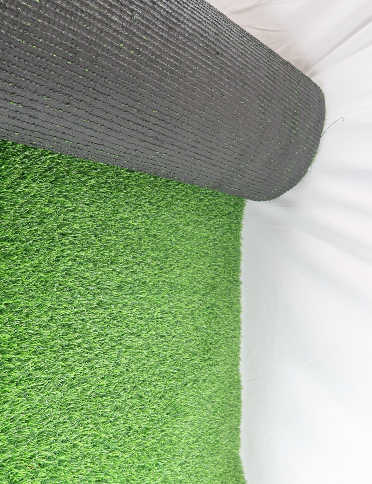
- Afrikaans
- Arabic
- Belarusian
- Bengali
- Czech
- Danish
- Dutch
- English
- Esperanto
- Estonian
- Finnish
- French
- German
- Greek
- Hindi
- Hungarian
- Icelandic
- Indonesian
- irish
- Italian
- Japanese
- kazakh
- Rwandese
- Korean
- Kyrgyz
- Lao
- Latin
- Latvian
- Malay
- Mongolian
- Myanmar
- Norwegian
- Persian
- Polish
- Portuguese
- Romanian
- Russian
- Serbian
- Spanish
- Swedish
- Tagalog
- Tajik
- Thai
- Turkish
- Turkmen
- Ukrainian
- Urdu
- Uighur
- Uzbek
- Vietnamese
Choosing the Right Grass for Your Home Lawn and Landscape Needs
Nov . 08, 2024 01:54 Back to list
Choosing the Right Turf Grass for Your Home A Comprehensive Guide
Creating a beautiful and lush lawn is a goal for many homeowners, and the right turf grass can make all the difference. Turf grass not only enhances the aesthetic appeal of your property but also provides a functional space for relaxation, outdoor activities, and social gatherings. With various types of turf grass available, understanding their characteristics, advantages, and maintenance requirements is crucial for making an informed decision that suits your climate, lifestyle, and soil conditions.
Types of Turf Grass
There are two primary categories of turf grass cool-season grasses and warm-season grasses.
1. Cool-Season Grasses These grasses thrive in the northern regions where temperatures are cooler. They grow best in the spring and fall when temperatures range from 60°F to 75°F. Popular cool-season grasses include Kentucky bluegrass, perennial ryegrass, and tall fescue. Kentucky bluegrass, known for its lush color and dense growth, is ideal for lawns, although it requires more maintenance. Perennial ryegrass establishes quickly and offers a beautiful, fine-textured lawn, making it an excellent choice for overseeding. Tall fescue, on the other hand, is more drought-resistant and tolerates heat better, making it a versatile option for transitional zones.
2. Warm-Season Grasses These grasses are suited for southern regions and thrive in warmer temperatures, typically between 80°F and 95°F. Popular options include Bermuda grass, zoysia grass, and buffalo grass. Bermuda grass is known for its durability and rapid growth, making it perfect for high-traffic areas. Zoysia grass, while slower to establish, provides a thick, carpet-like lawn once mature and has excellent drought resistance. Buffalo grass, a native species, is incredibly low-maintenance and requires minimal water, making it an eco-friendly choice.
Factors to Consider When Choosing Turf Grass
Selecting the right turf grass involves considering several factors
- Climate Your local climate is perhaps the most critical factor influencing the type of grass you should choose. Understanding whether you are in a cool or warm climate zone will guide you in selecting suitable grass varieties.
- Sunlight and Shade Assess the amount of sun and shade your lawn receives throughout the day. Some grasses, like Bermuda and zoysia, thrive in full sun, while others, like fine fescue, tolerate shaded areas better.
- Foot Traffic If you have children or pets that frequently play on your lawn, consider a more durable grass type. Bermuda and tall fescue are great options for high-traffic areas due to their resilience.
turf grass for homes

- Soil Type Conduct a soil test to understand its pH, nutrient levels, and texture. Some grasses are better suited to sandy soils, while others prefer clay-rich soils.
- Maintenance Requirements Different grass types come with varying maintenance needs. For example, Kentucky bluegrass requires regular watering and fertilization to maintain its lush appearance, while buffalo grass is nearly self-sustaining.
Maintenance Tips for a Healthy Lawn
Once you've chosen the appropriate turf grass, maintaining your lawn is essential for its longevity and appearance. Here are some maintenance tips
1. Mowing Regular mowing promotes healthy growth. Be sure to adjust your mower height based on the type of grass—generally, leaving the grass a bit taller promotes healthy root development and shade for the soil.
2. Watering Watering deeply and less frequently encourages deep root growth. A general rule of thumb is to provide about one inch of water per week, including rainfall.
3. Fertilization Following a fertilization schedule based on the needs of your specific grass type can enhance growth and color. Use a slow-release fertilizer to provide nutrients over time without over-fertilizing.
4. Aeration Aerating your lawn annually helps relieve soil compaction and allows air, water, and nutrients to penetrate deeper into the soil.
5. Weed and Pest Control Keep an eye out for weeds and pests, and address them promptly. Regular overseeding and the use of eco-friendly herbicides can help maintain a healthy lawn.
Conclusion
Choosing the right turf grass for your home is an essential step in creating a vibrant and functional outdoor space. By considering the climate, sunlight, foot traffic, soil type, and maintenance requirements, you can select a grass variety that suits your needs. With proper care and attention, your lawn can become a beautiful extension of your home, providing enjoyment and enhancing your property’s value for years to come.
-
The Benefits of Artificial Turf for Indoors
NewsJul.15,2025
-
How Artificial Grass Suppliers Ensure Quality Products
NewsJul.15,2025
-
Artificial Grass and Pets: A Space for Relaxation
NewsJul.08,2025
-
Balcony & Outdoor Decoration with Artificial Grass
NewsJul.08,2025
-
Best Indoor Artificial Grass for Home
NewsJul.07,2025
-
Best Pet Turf for Dogs: Safe & Durable Artificial Grass Options
NewsJul.07,2025
Products categories









